Andy Rouse's Shots of the MonthText and photography copyright Andy Rouse. All rights reserved.
Hello everyone and welcome to the second Andy Rouse NPN experience. Apologies for the slight delay but Iíve been having calibration nightmares with my monitor, so I have been unable to convert any new images to show you. Anyway, thatís all fixed now thanks to some gentle persuasion with a hammer, so here we go. Firstly, Iíd like to say thanks to everyone who responded with comments from the last article - they are useful and so please feel free to keep them coming!
I thought that Iíd use this monthís column to show you some recently shot material from last month in Kenya. In fact, I spent nearly 4 weeks there working with two families of Cheetah for a forthcoming book of mine on these wonderful cats (to be published September 2004). To keep me company and help fund the trip I took three groups of photographers with me and you can read about their experiences in this monthís newsletter on www.warehouseexpress.com. Anyway, without further delay, hereís this monthís offering!
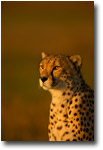
Photo 1
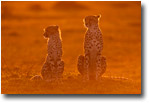
Photo 2
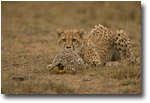
Photo 3
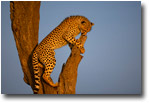
Photo 4
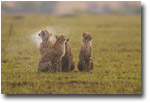
Photo 5
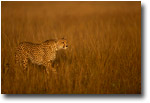
Photo 6
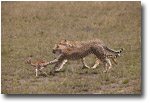
Photo 7
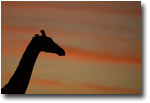
Photo 8

Photo 9
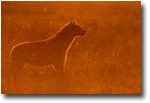
Photo 10
|
|
Editorís Note - Thumbnails are links to larger images, presented in slide show format.
Cheetahs are certainly beautiful cats and I really love working with them Ė when they are awake, of course. The biggest problem when photographing Cheetah is to get their eyes wide open, and the only way to guarantee it is to shoot in low light at the start or end of the day. Photo 1, taken right after dawn, shows a lovely female in golden light and her eyes can be clearly seen. To be honest, once youíve found the Cheetah and positioned yourself, this kind of shot is very easy to get - all you have to do is compose it correctly and bingo! Exposure wise itís a doddle too, especially with my DSLR as all I have to do is to underexpose to avoid the white muzzle losing detail. EOS 1Ds, 500mm F4L IS lens, ISO 50, exposure f/5.6 at 1/125th.
I deliberately chose one female and her three cubs to work with for most of the trip as Iíd worked with her previously last August. Sheís a very tolerant mother, an active hunter and the cubs are always up to mischief. The key to getting good shots of any kind is to spend time with your subject, but Cheetahs can really stretch anyoneís patience to the limit. For Photo 2, we endured two days of almost constant sleeping after a kill. Then, right at sunset, the female and one of her cubs started to get more active and sat down on a slight mound. Seeing the shot straight away, I positioned the vehicle to get a backlit shot, ensuring that the exposure compensation was well into the minus to create a moody image. The overall scene was really stunning, but far too ďbusyĒ for the camera, so I had no choice but to crop reasonably tightly to get the image that you see here. EOS 1Ds, 500mm F4L IS lens, ISO 50, exposure f/5.6 at 1/180th.
Cheetah cubs are always inquisitive and their encounter with this tortoise gave me some great photographic opportunities. Two out of the three cubs were terrified of it and just scowled from a distance. But the female cub, being bolder than the males, strode right in and started to prod the shell. When she sat down behind the tortoise, I knew it was a diamond advertising shot (tortoise and the hare concept) and took Photo 3. My options were limited, mainly because I was laughing too much, so I just put the focus on the tortoise and allowed the cheetah to fall gently out of focus. EOS 1Ds, 500mm F4L IS lens, ISO 200, exposure f/4 at 1/60th.
One of the reasons that I wanted to work with these Cheetah cubs in particular was their fascination with climbing trees. As young cubs, they were always climbing small shrubs, but now with teenage enthusiasm they had graduated to real trees. This cub was about 20 feet up, which it managed without even a second glance. The problem came when getting down as it didnít have a clue and resorted to literally falling out of the tree each time. One morning we caught it in the act just after sunrise as seen in Photo 4, so it was illuminated by stunning red light. Unfortunately, mother had never taught it that one doesnít start destroying the very branch that one is standing onÖ.. EOS 1Ds, 300mm F4L IS lens, ISO 50, exposure f/5.6 at 1/60th.
Like Iíve said before, the key to great shots is to spend time in the field. So when the heavens opened and deposited 80mm of rain in 1 hour, we stayed with the Cheetahs and tried to capture the spectacle. At one point the rain came down so hard that we lost sight of them, but they never moved an inch, staying in the same spot throughout and getting drowned into the bargain. At the end of the shower, the female shook herself dry, and I took the opportunity to record her antics for posterity (Photo 5). The light was really poor and I was torn between using a low ISO to maintain quality, or using a higher ISO to give me a faster shutter speed and allow me to freeze her in mid shake. In the end I opted for ISO 200 and processed the RAW with a little extra noise reduction to remove any grain. EOS 1Ds, 500mm F4L IS lens, ISO 200, exposure f/4 at 1/250th.
Photo 6, a nice shot of the female stalking a Thomsonís Gazelle, I resisted the temptation to crop it tight. Leaving some space on the right for the Cheetah to walk into gives the image a nice balanced feel and also shows off the beauty of the grass in the morning light. EOS 1Ds, 500mm F4L IS lens, ISO 50, exposure f/4 at 1/125th.
Obviously any Cheetah book needs kills but I didnít want to overdose on it as not everyone wants to see blood and gore. In fact, Photo 7 is probably the most gory picture that I will have in the book as it illustrates a vital lesson in the young cubsí development. The mother had caught this new born gazelle and given it to the cubs to kill, which allows them to learn the skills that theyíll depend on a few months later. Itís an interesting spectacle to watch, although I couldnít say that I enjoyed watching such a young animal suffer. But itís nature and my job to record it. My only regret was that it all happened in the middle of the day when the light is at its worst, so apologies for the bleached colours but there is little I can do if the light isnít there. EOS 1Ds, 70-200 f2.8L IS lens, ISO 50, exposure f/4 at 1/1250th.
Over the course of the four weeks, there were days when the Cheetah just vanished from us (as they are prone to do), so on these days we concentrated on other subjects. Here are three of my favourites that are slightly different Mara shots than the standard dull portraits (which I already have several hard drives full of!).
Driving out towards the Cheetahs, we came upon this Giraffe early in the morning (Photo 8). In fact, it was very early in the morning, about 30 minutes before sunrise. The colour was forming well in the sky however, so I set the ISO to 100, metered from the brightest part of the sky and took this silhouette. I knew that camera shake might be a problem so I rested the 500mm on a beanbag and relied on the image stabilised lens to do the rest. EOS 1Ds, 500mm F4L IS lens, ISO 100, exposure f/4 at 1/60th.
Yes, as seen in Photo 9, the Rouse does shoot the occasional landscape, although it has to be pretty obvious for me to see it. On this occasion it couldnít have been more obvious, and with constant abuse from Marion, Ian and Chris (the clients for that week), I tried to do it justice. It was a truly amazing sunset and I wished for a panoramic camera! EOS 1Ds, Tamron 28-70 Di Lens, ISO 100, exposure f/8 at 1/60th.
I love Hyenas (one ate my D60 and flash last year) and will take any chance to photograph them. As I have so many hyena portraits in my collection, I now look for something different and slightly more pictorial. We found this chap early in the morning watching a female lion carrying off the remains of a carcass. A nearby male lion was preventing the hyena from walking any closer and he stayed still long enough to give us the opportunity of a backlit shot. Using the same technique as for the earlier Cheetah shot, I deliberately underexposed Photo 10 to create a moody effect, taking care not to subject the lens to excessive flare. A beautiful image of a much mis-understood and often ignored predator; the vacuum cleaner of the Mara! EOS 1Ds, 300mm F4L IS lens, ISO 50, exposure f/5.6 at 1/180th.
Well there you have it, a small collection of the 3,000 or so images that I took on the trip. Now that I finally have my monitor calibration back to normal, Iím now processing and getting them ready for the book in time for the March 30th deadline I have been given. Sounds like a lot of time, but Iím spending most of March in Sri Lanka chasing leopards, so theyíll be a few long nights before I leave. Anyway, remember that your comments are always welcome and Iíll be back next month with some leopard photos. Finally, thanks to everyone who came to watch me present on the Lowepro stand last week at Focus on Imaging and an even bigger thanks to those who endured the hours of Cheetahs (and my jokes) in the Mara.
AR-NPN 1153
Andy Rouse is a professional wildlife photographer based in the U.K. His professional credits include hosting the Discovery Channelís Wildlife Photographer TV series, and the publication of six books, including his soon-to-be-released The DSLR Masterclass. Andy's images are represented by NHPA and Getty Images and are sold worldwide. To learn more about Andy, check out his NPN bio. To view more of Andy's work, visit his website at www.andyrouse.co.uk.
Comments on NPN wildlife photography articles? Send them to the editor.


| 


